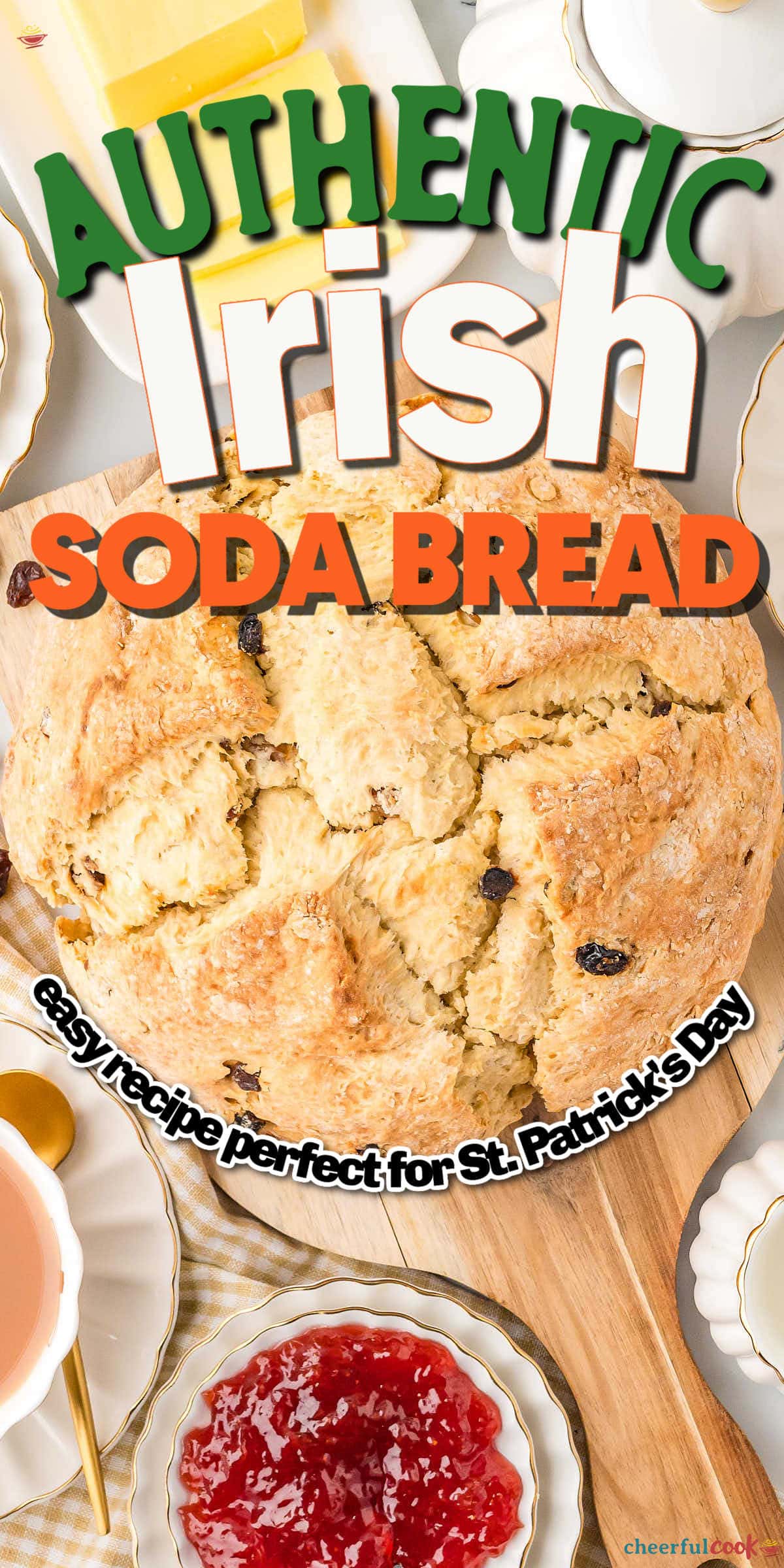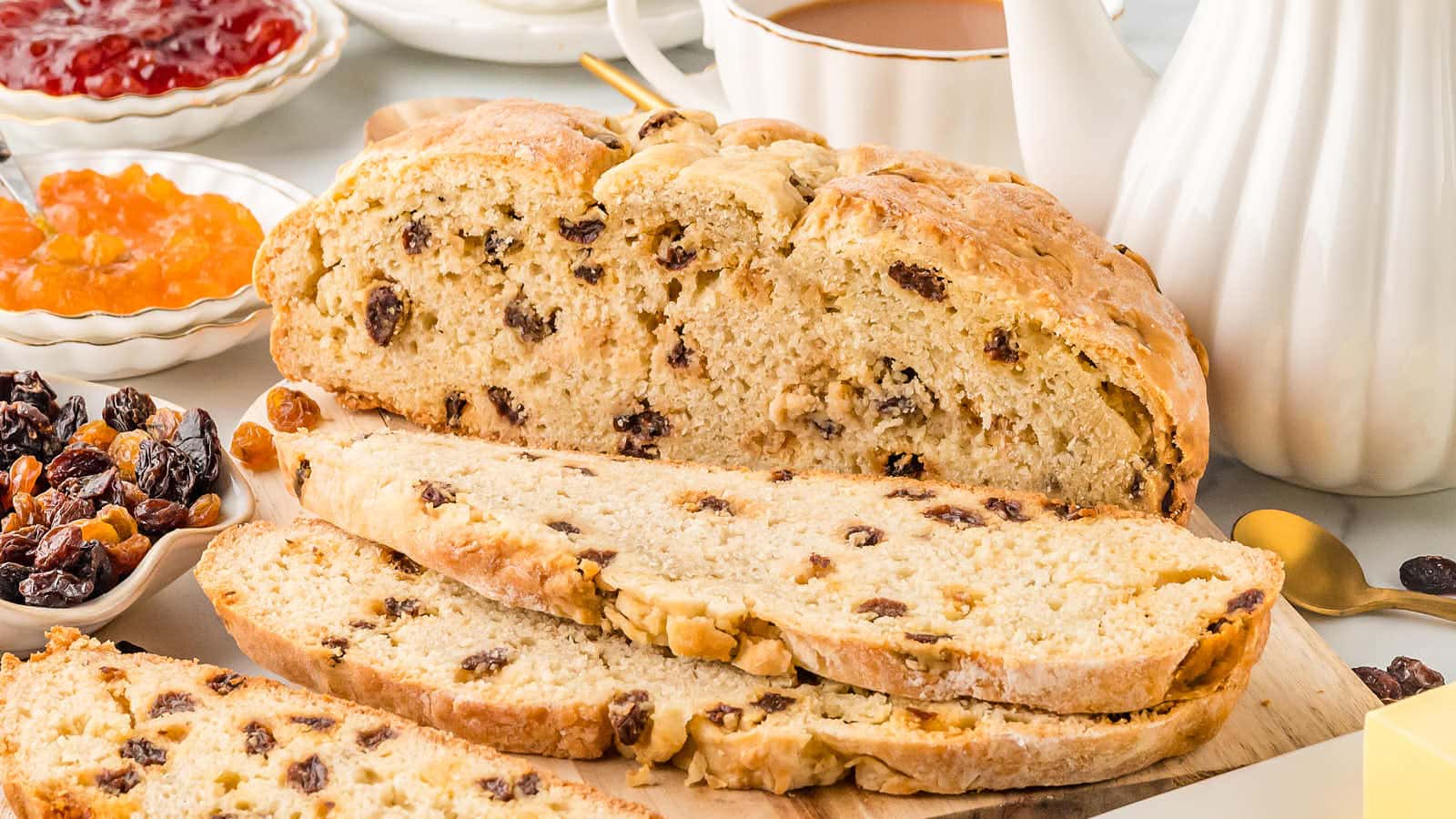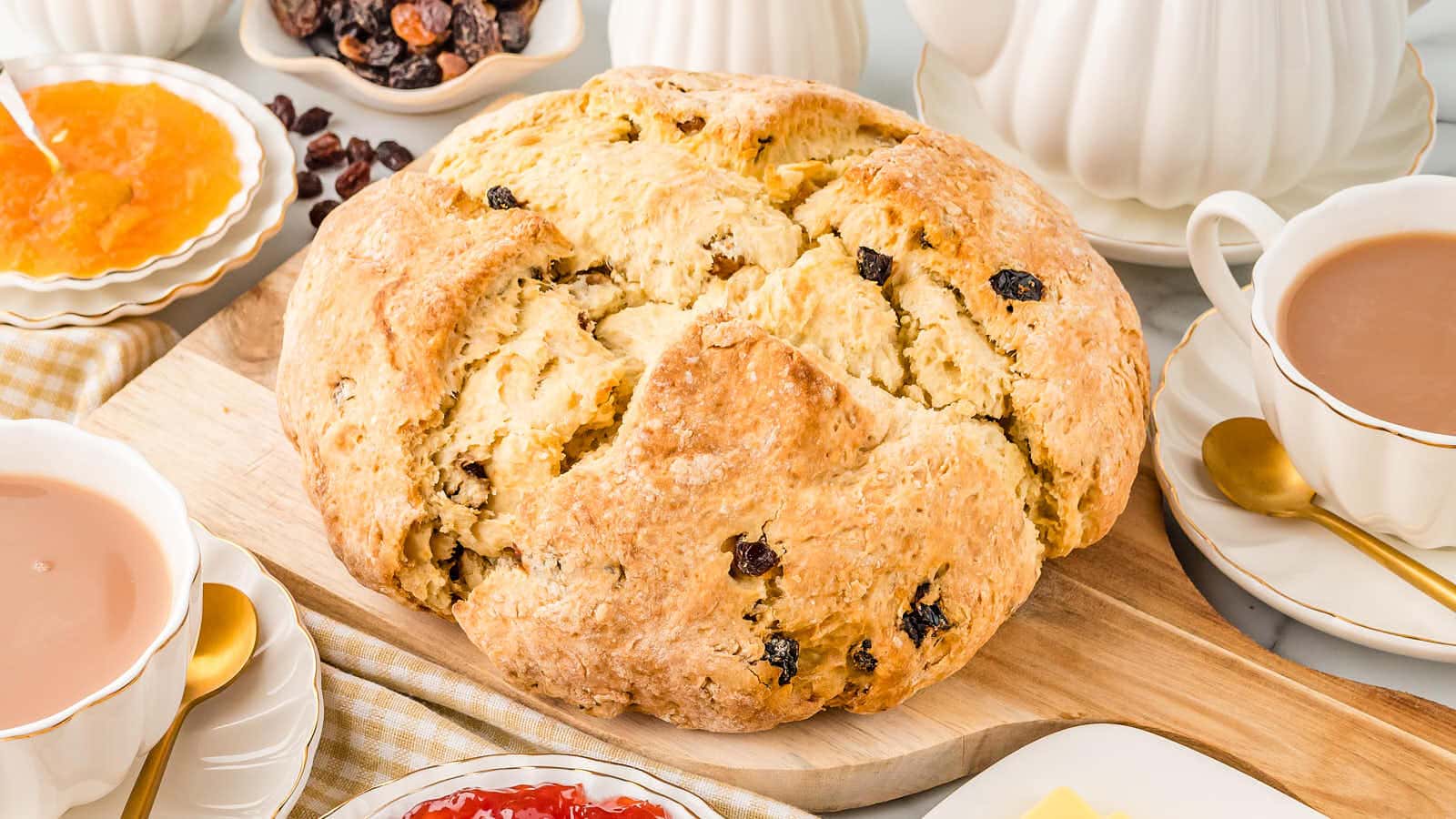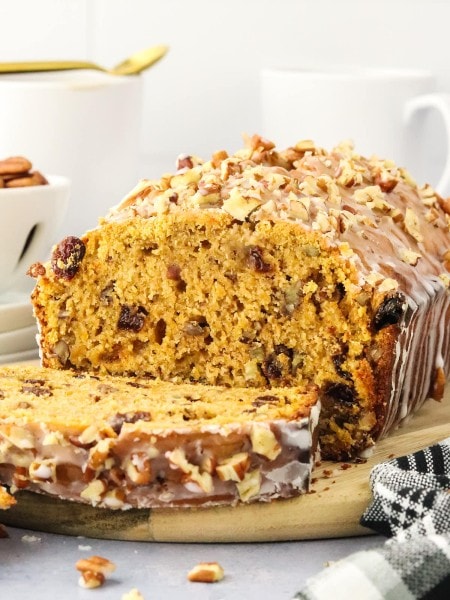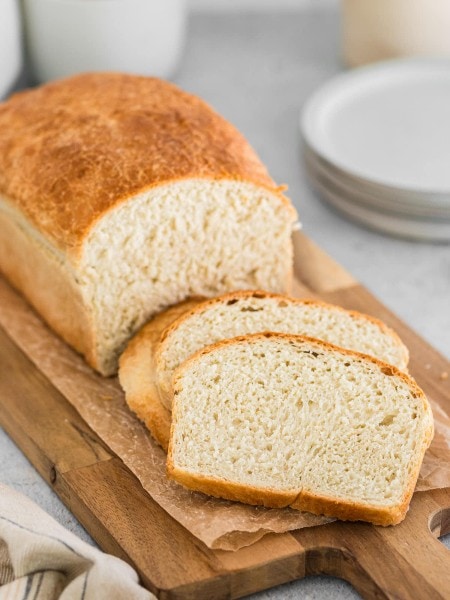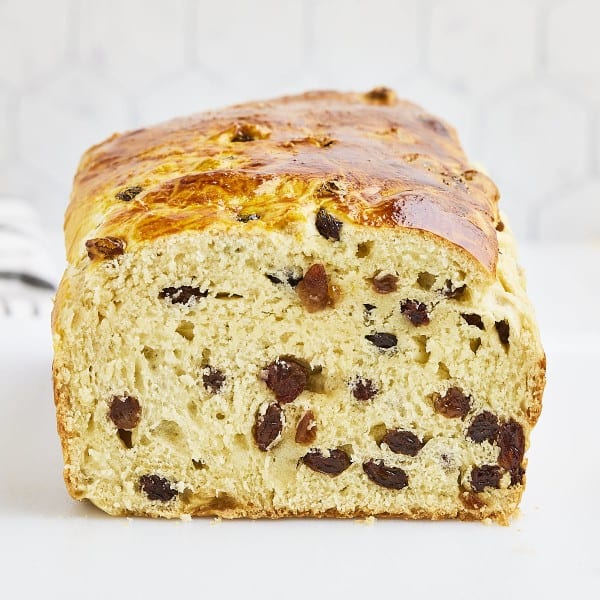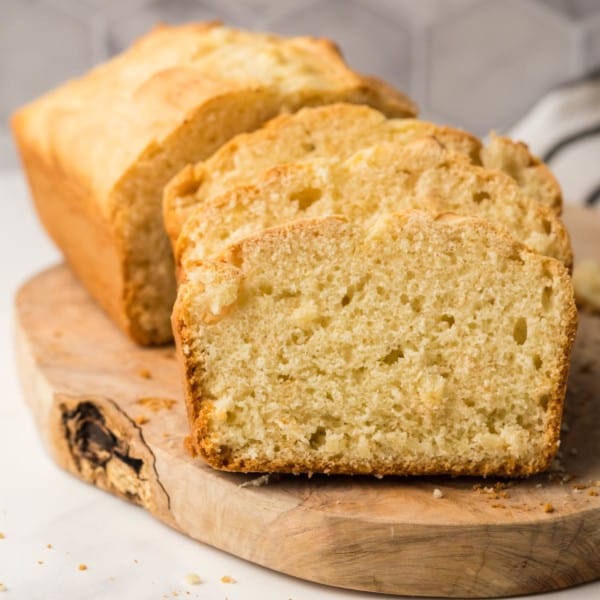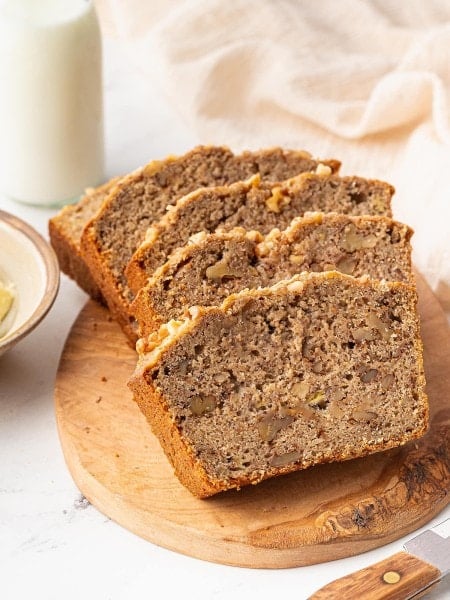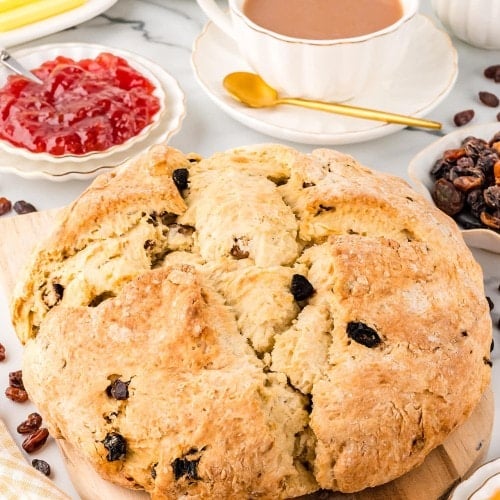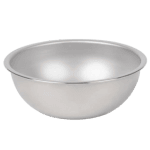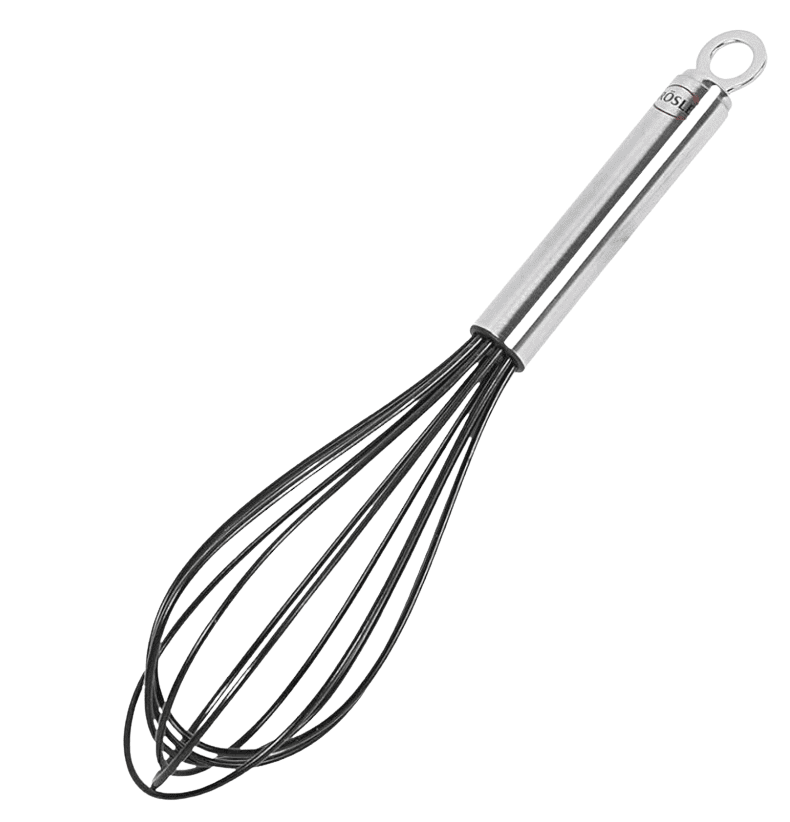Irish Soda Bread
Traditional Irish Soda Bread is the kind of recipe that makes you appreciate how simple baking can be. It’s a simple, no-yeast bread with a crisp golden crust and a soft, slightly sweet interior.
With just a handful of ingredients, it turns into a rustic loaf with a golden crust and a soft, slightly dense center. Buttermilk and butter give it a rich, old-fashioned flavor, while a touch of sugar balances everything out.
This bread has been a staple for generations, especially around St. Patrick’s Day when homemade Irish recipes take center stage. There’s no yeast to deal with and no waiting for dough to rise.
Just mix everything together, shape the loaf, and bake. Whether it’s served warm with butter, alongside a cozy meal, or toasted with jam for breakfast, this is the kind of bread that always feels like a little bit of home.
Irish Soda Bread Recipe Highlights
- A true traditional Irish recipe that’s been enjoyed for generations.
- Ready in under an hour with no waiting for dough to rise.
- Made with just a few simple ingredients for an easy, no-fuss bread.
- Bakes into a rustic loaf with a crisp crust and soft, tender center.
- Perfect alongside soups, stews, or simply served with butter.
Ingredient Notes
Please check the recipe card below for a detailed, printable ingredient list.
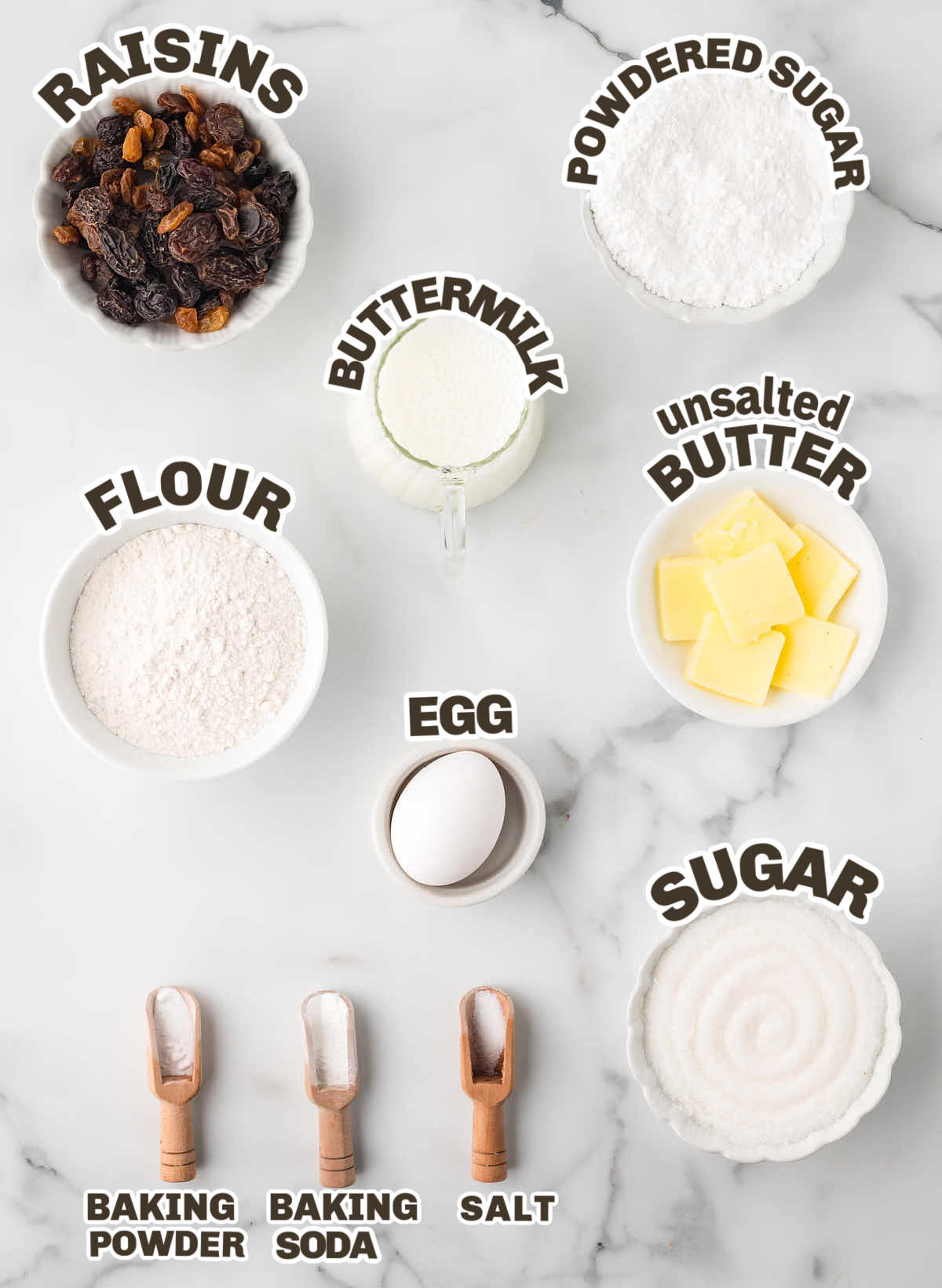
ALL-PURPOSE FLOUR – The backbone of the bread! All-purpose flour gives soda bread its sturdy structure while keeping it soft and tender. For a more rustic touch, you can swap in some whole wheat flour, but don’t use too much—it can make the bread dense.
LEAVENING AGENTS – Baking soda is the leavening agent that makes soda bread rise. Baking soda reacts with the acidity of the buttermilk, creating tiny air pockets that make the bread light and fluffy. Make sure your baking soda is fresh for the best results! A little extra boost of baking powder to ensure the bread has just the right amount of lift. It works alongside the baking soda to help the bread bake evenly.
SALT – A pinch of salt balances the sweetness of the raisins and brings out the flavors of the bread. Don’t skip the salt because without salt, the bread can taste flat.
SUGAR – Just a touch of granulated sugar gives the bread a hint of sweetness without making it overly sugary. It complements the raisins and makes the bread more versatile for sweet or savory spreads.
BUTTER – Cold, cubed butter gets worked into the dry ingredients to create a tender crumb. The butter melts into the dough as it bakes, making the bread rich but not greasy. If all you have is salted butter, just reduce the added salt in the recipe slightly.
RAISINS – These little pops of sweetness make every slice of this soda bread irresistible. You can use golden raisins for a milder flavor or stick with classic dark raisins for a more traditional taste. Currants or dried cranberries are great substitutes if you prefer.
BUTTERMILK – The key to traditional soda bread! Buttermilk’s tangy flavor reacts with the baking soda, creating that iconic rise and tender texture. If you don’t have buttermilk on hand, you can make your own by adding a tablespoon of lemon juice or vinegar to a cup of milk and letting it sit for a few minutes.EGG – A single egg binds the dough together and adds a bit of richness. It also helps the crust develop a lovely golden color when baked.
How To Make Irish Soda Bread
Please check the printable recipe card below for more detailed instructions.

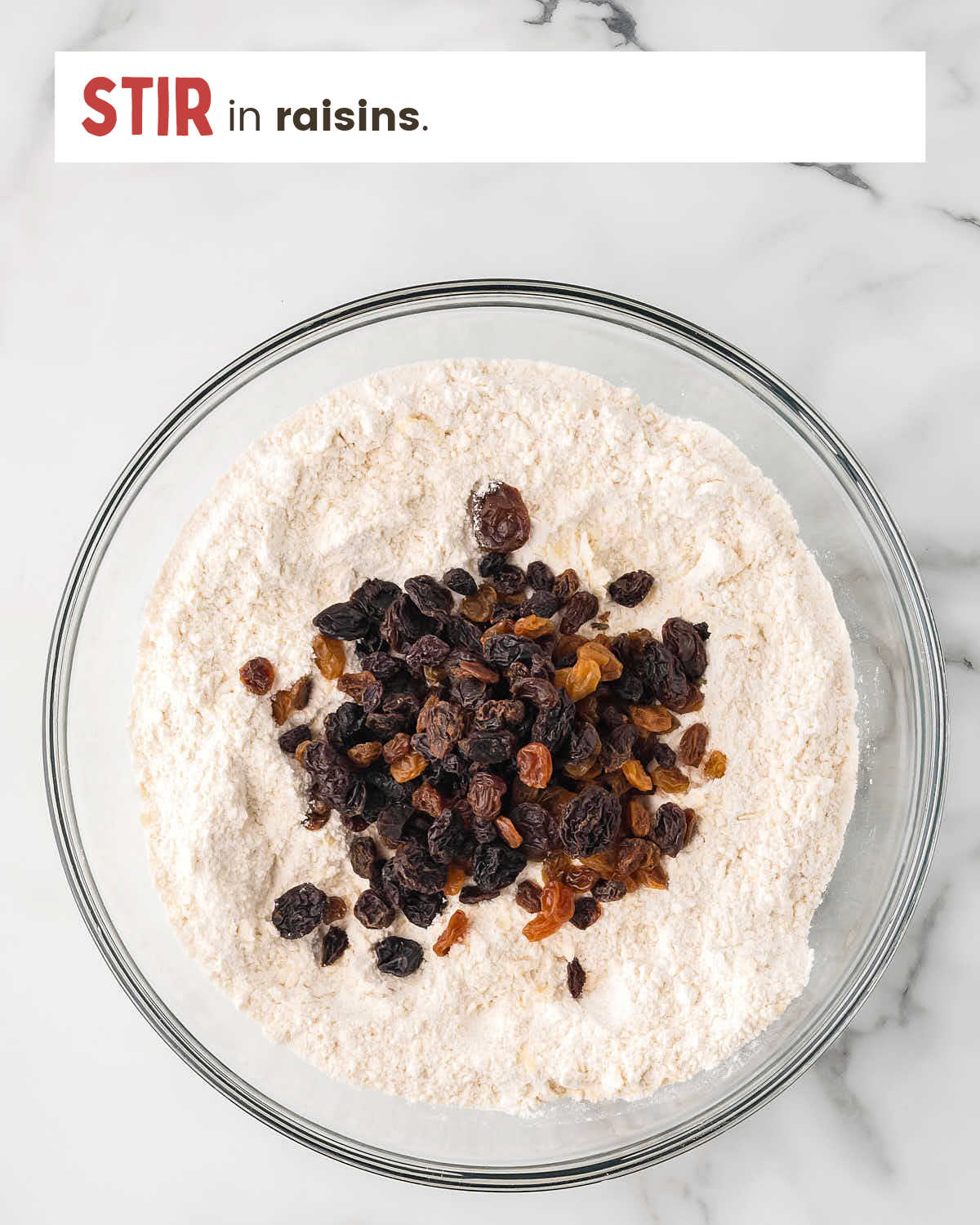
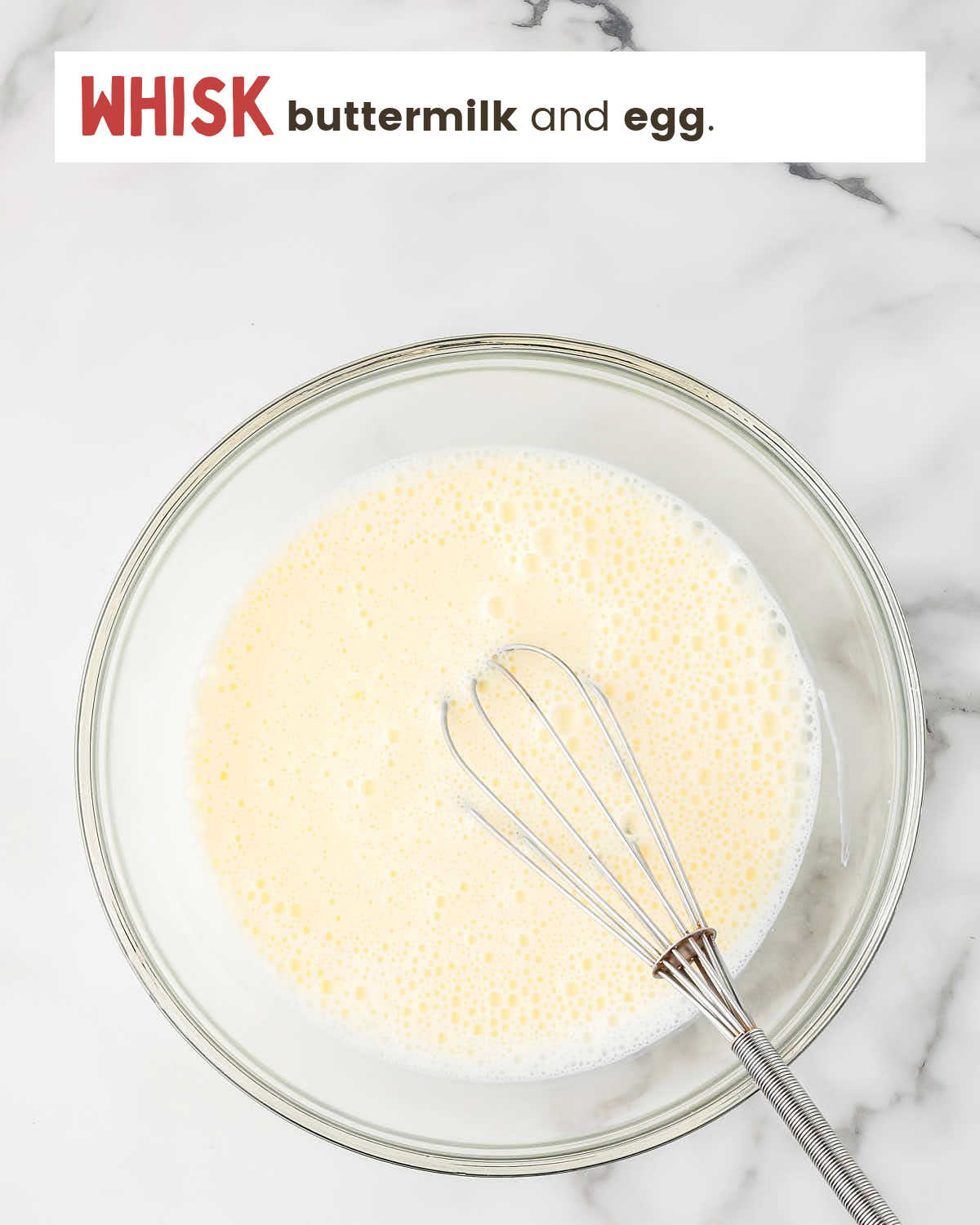

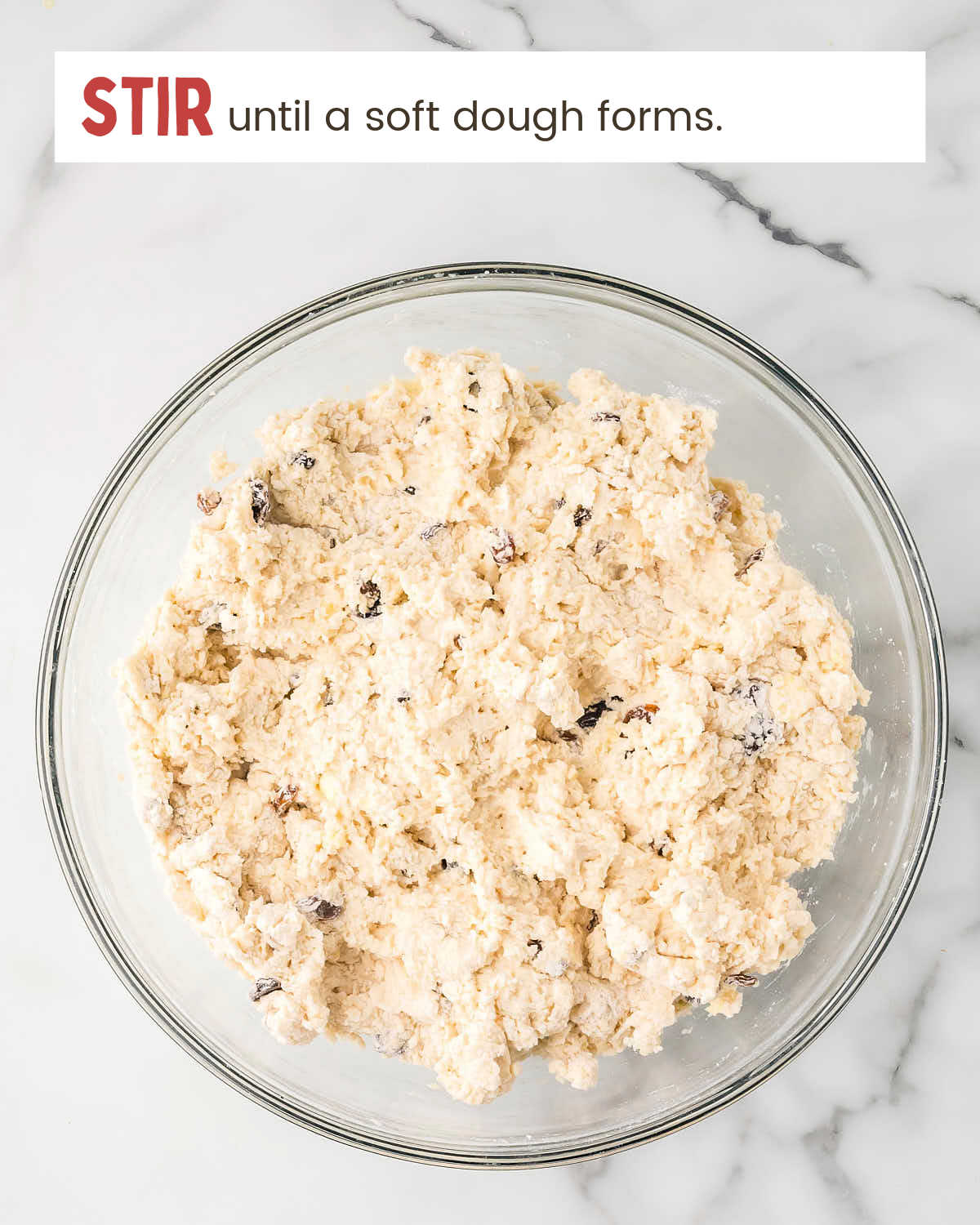
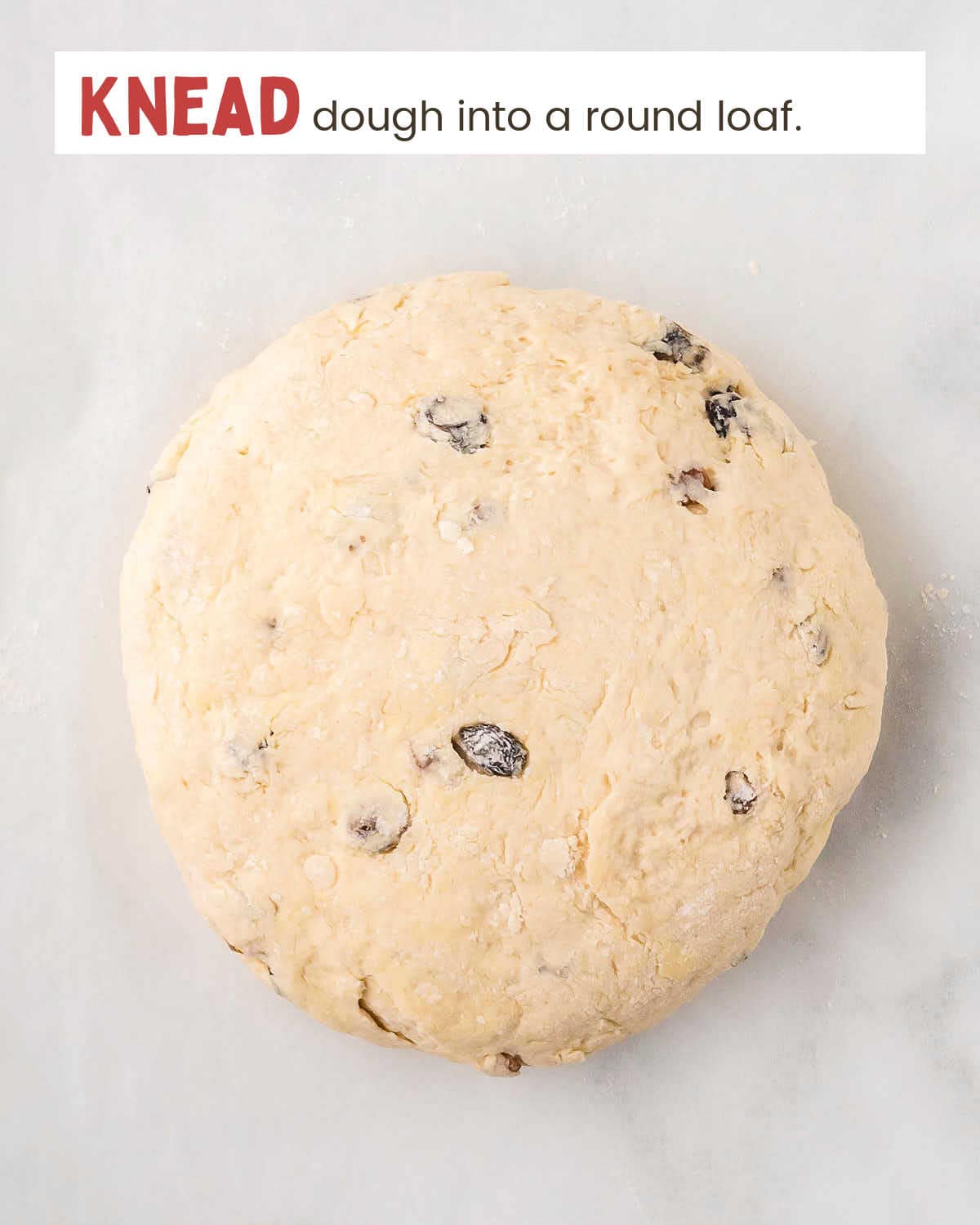
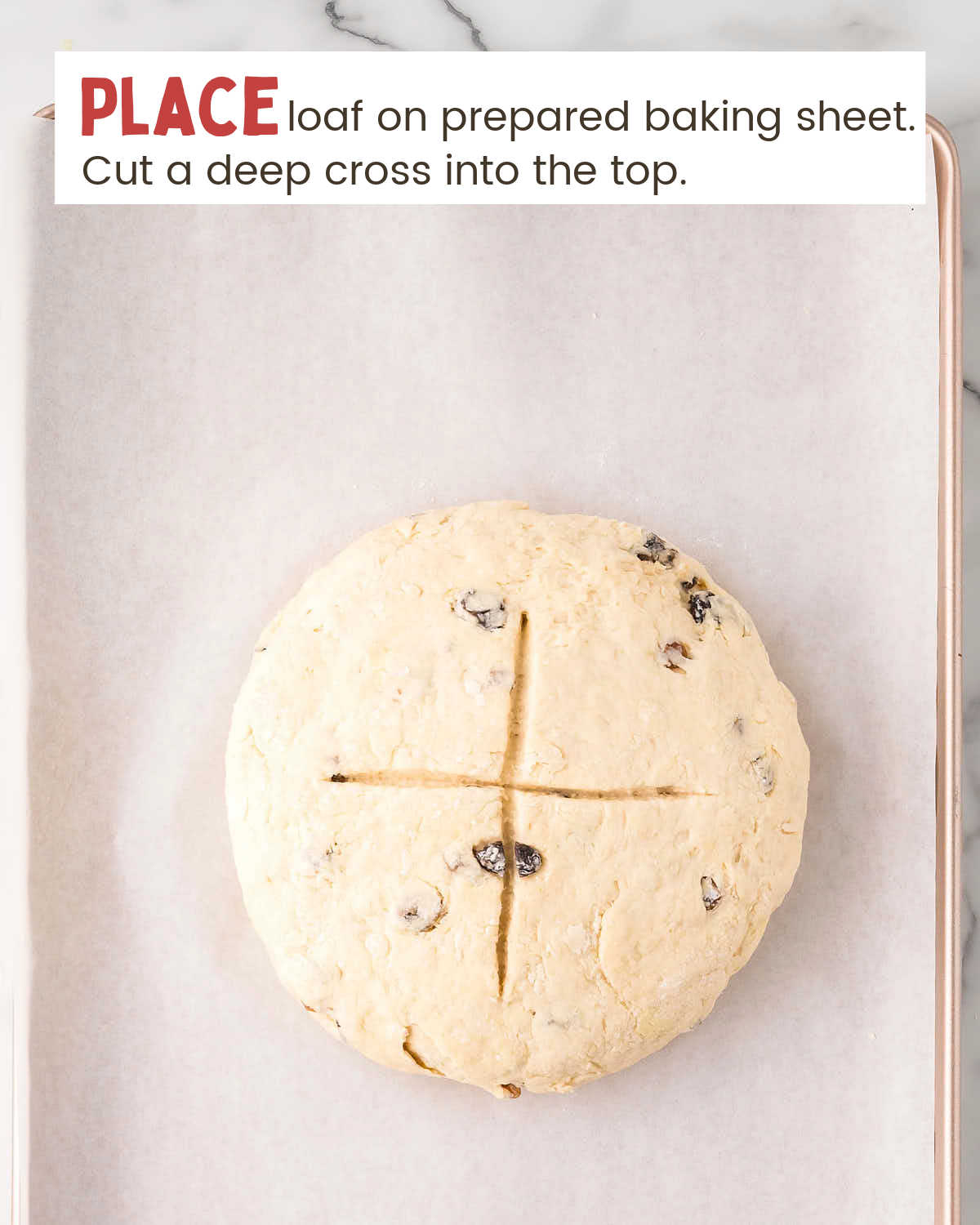
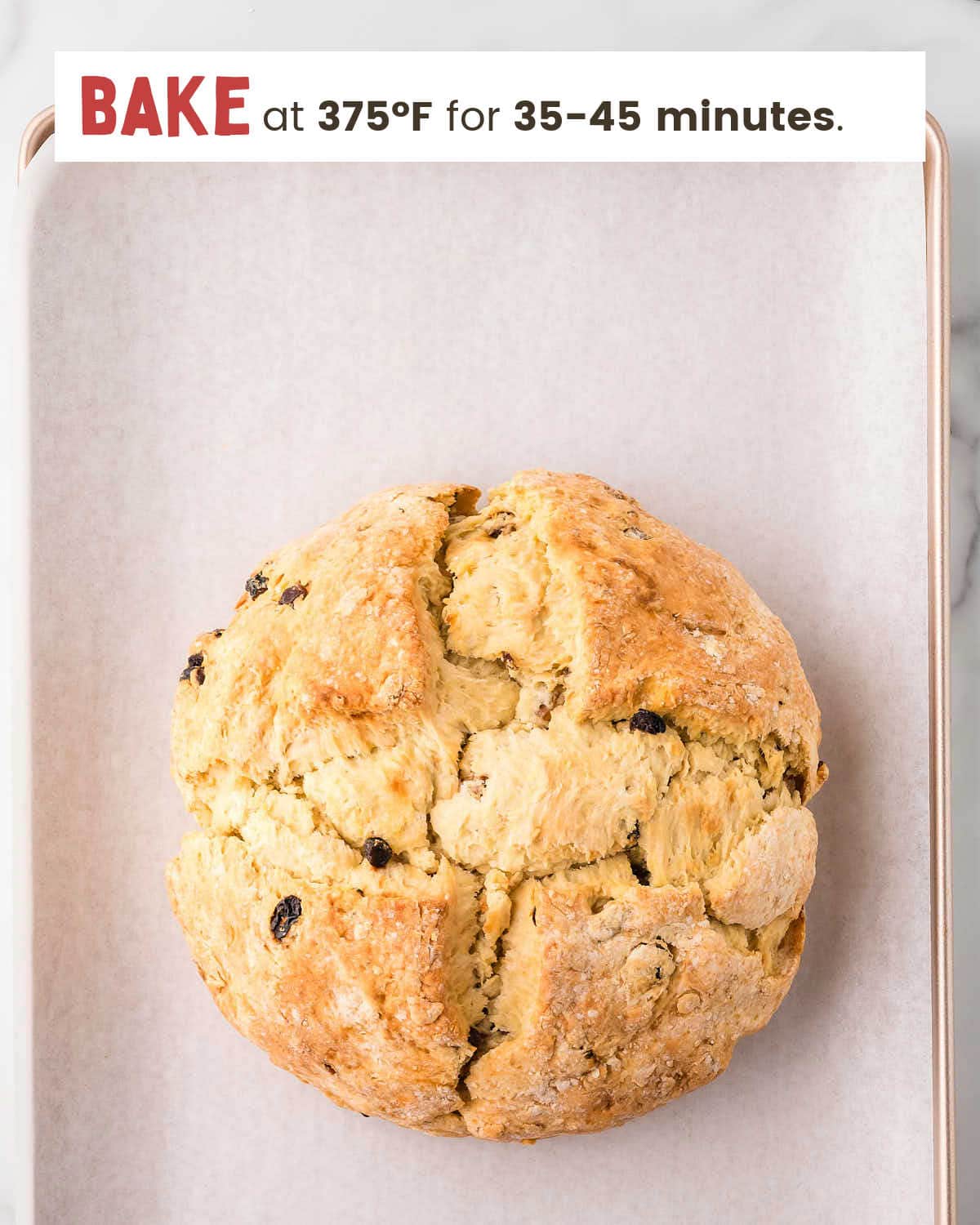
- Whisk the dry ingredients in a large bowl.
- Cut in the cold butter until crumbly, then stir in the raisins.
- Whisk the buttermilk and egg, then mix into the dry ingredients until just combined.
- Shape into a round loaf, cut a deep cross on top, and bake at 375º Fahrenheit for 35-45 minutes.
Leftovers and Storage
STORE – Wrap the bread tightly in plastic wrap or aluminum foil and store it at room temperature for up to 2 days. For longer storage, place it in an airtight container in the refrigerator for up to 5 days.
FREEZE – Yes, Irish soda bread freezes beautifully! Wrap the loaf tightly in plastic wrap, then foil, and place it in a freezer-safe bag. It will keep for up to 3 months. Let it thaw at room temperature before serving.
REHEAT – To refresh the bread, wrap it in foil and warm it in a 350° Fahrenheit oven for about 10-15 minutes. You can also toast slices individually for a quick option.
More Easy and Delicious Bread Recipes
Serving Suggestions
BUTTER and JAM – A classic way to enjoy Irish Soda Bread, especially warm from the oven.
CHEDDAR & APPLES – A great balance of savory and sweet for a snack or light meal.
SOUPS and CHOWDERS – Use it for dipping into creamy soups like potato or seafood chowder.
HONEY & CREAM CHEESE – A slightly sweet and tangy topping that works well with the bread’s flavor.
BEEF STEW – The perfect hearty meal to pair with a thick slice of this bread.
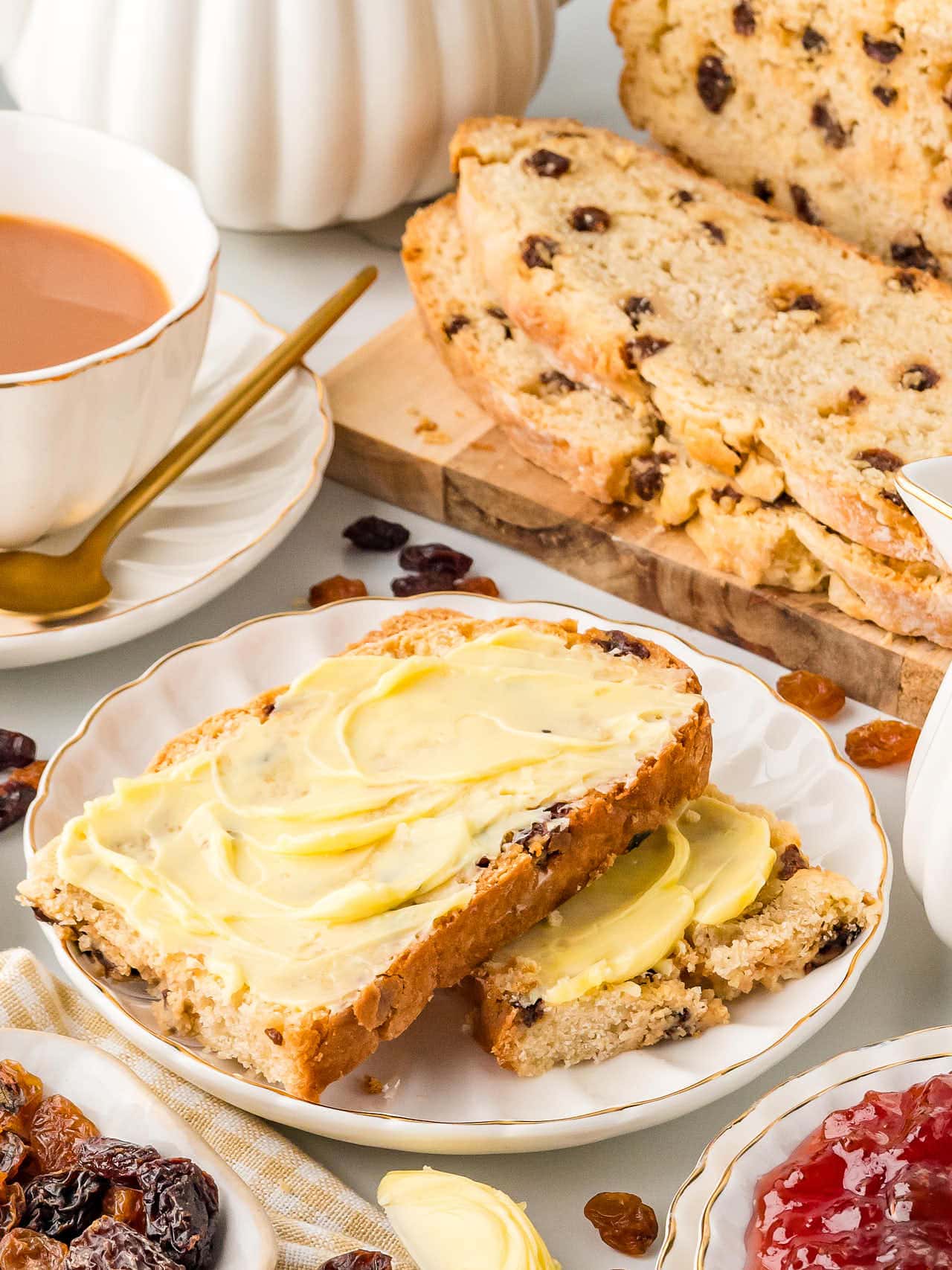
Recipe Success Tips
WORK THE DOUGH GENTLY – Soda bread dough is meant to be rustic and just barely combined. Overmixing or kneading too much will develop the gluten in the flour, resulting in a tougher loaf. Handle the dough as little as possible to keep it tender.
COLD BUTTER IS KEY – The butter should be as cold as possible when you cut it into the flour mixture. Cold butter creates tiny pockets of steam while baking, contributing to the bread’s flaky crumb. If you’re worried about the butter warming up, you can even pop it into the freezer for 30 min before working with it.
SCORE THE CROSS DEEPLY – Cutting a cross on top isn’t just for decoration. It helps the Irish Soda bread bake evenly by allowing steam to escape. Make sure to cut deep enough (about ¼ inch) for the best results.
FLOUR YOUR SURFACE – Soda bread dough can be sticky, so lightly flour your work surface and hands when shaping the loaf. This makes it easier to handle and prevents sticking without adding too much extra flour.
DON’T OVERTHINK THE SHAPE – The beauty of soda bread is its rustic look. Aim for a roughly round loaf, but don’t stress over perfection. The uneven cracks and folds give it character.
ADJUST FOR ALTITUDE OR HUMIDITY – If you’re in a humid climate or at high altitude, you may need to add a bit more flour to the dough to keep it from being overly sticky. Start with small amounts and work until the dough holds together without clinging to your hands.
BAKE ON THE MIDDLE RACK – Positioning the loaf in the center of the oven ensures even baking. If your oven runs hot, check the bread about 5 minutes early to make sure the crust doesn’t get too dark.
TENT WITH FOIL IF NECESSARY – If the crust is browning faster than you’d like, loosely tent the bread with aluminum foil halfway through baking. This keeps the crust from becoming too dark while the inside finishes baking.
CHECK FOR DONENESS – To know if your soda bread is fully baked, tap the bottom of the loaf—it should sound hollow. If you’re unsure, insert a toothpick or skewer into the center. It should come out clean.
SERVE WARM – Irish soda bread is best enjoyed fresh and slightly warm. Slice it with a serrated knife and slather with butter, jam, or even a drizzle of honey for a treat!
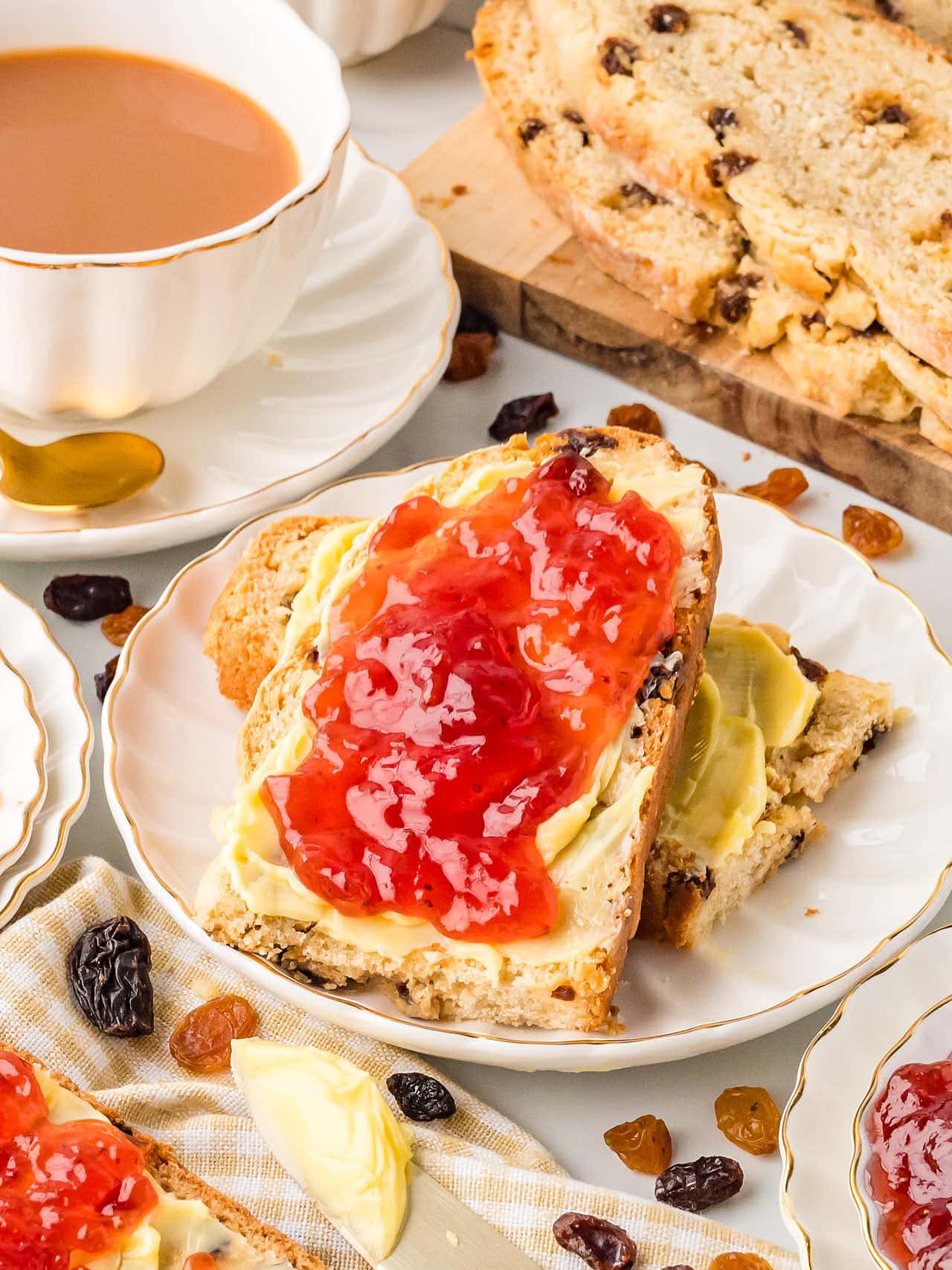
Commonly Asked Questions
Can I Make Irish Soda Bread Without Raisins?
Yes! Simply leave the raisins out, or replace them with dried currants, cranberries, or even chocolate chips if you’re feeling adventurous.
I Don’t Have Buttermilk. Can I Substitute It With Something Else?
If you don’t have buttermilk, you can make a substitute by adding 1 tablespoon of lemon juice or vinegar to 1 cup of milk. Let it sit for 5 minutes, then use as directed.
Why Is My Soda Bread Too Dense?
Over mixing the dough or adding too much flour can make the bread dense. Mix the ingredients just until combined and keep the dough soft for the best texture.
Why Is My Bread Crumbly?
Crumbliness can result from too little liquid or overbaking. Double-check your buttermilk measurement and ensure the bread isn’t left in the oven too long.
Can I Add Other Flavors?
Definitely! Popular additions include orange zest, chopped nuts, or even a pinch of cinnamon. Just be careful not to overload the dough, as it should still hold together easily.
Can I Use Whole Wheat Flour?
Yes, but for the best results, only replace up to half of the all-purpose flour with whole wheat. This keeps the bread tender while adding a bit of nuttiness.
Why Do You Cut A Cross On The Bread?
Scoring the cross allows the bread to expand evenly as it bakes, preventing cracking in odd places. It’s also a traditional Irish touch said to “let the fairies out” or bless the bread!
More St. Patrick’s Day Favorites
Soda Bread
Ingredients
- 4 cups all-purpose flour plus extra for dusting
- 1 teaspoon baking soda
- 1 teaspoon baking powder
- 1 teaspoon salt
- 3 tablespoons granulated sugar
- ½ cup butter unsalted, cold and cubed
- 1 cup raisins
- 1 ¾ cups buttermilk
- 1 large egg
Instructions
- Preheat the oven to 375° Fahrenheit. Line a baking sheet with parchment paper or lightly grease it.
- Whisk the flour, baking soda, baking powder, salt, and sugar in a large mixing bowl.
- Add the cold, cubed butter to the dry ingredients. Use a pastry cutter or your fingertips to blend until the mixture resembles coarse crumbs.
- Stir in the raisins, ensuring they are evenly distributed throughout the mixture.
- Whisk the buttermilk and egg together in a separate bowl. Gradually add this mixture to the dry ingredients, stirring gently with a wooden spoon or spatula. The dough will be soft and slightly sticky.
- Turn the dough out onto a lightly floured surface and knead gently a few times. Just enough to bring it together. Shape it into a round loaf.
- Place the loaf on the baking sheet. Use a sharp knife to cut a deep cross (about ¼ inch) into the top of the dough.
- Bake for 35-45 minutes, or until the crust is golden and the loaf sounds hollow when tapped on the bottom.
- Let the bread cool on a wire rack for at least 10 minutes before slicing.
Notes
Nutritional Information
Nutritional Disclaimer
Cheerful Cook team members are not trained nutritionists or medical professionals. Calorie information and nutritional values are estimates. If you have nutritional concerns, we recommend using a nutritional calculator.
Maike Corbett is the founder and food blogger of Cheerful Cook, a popular recipe website featuring comfort food recipes from the US and Germany. She has been featured in numerous media outlets, including the AP Wire and MSN.

